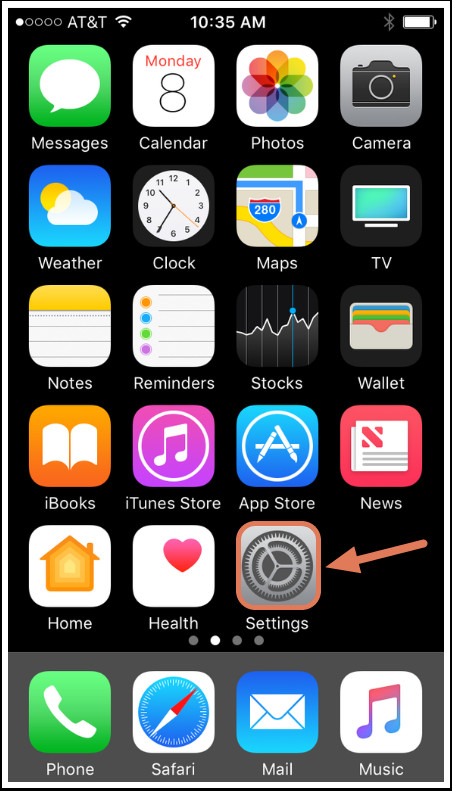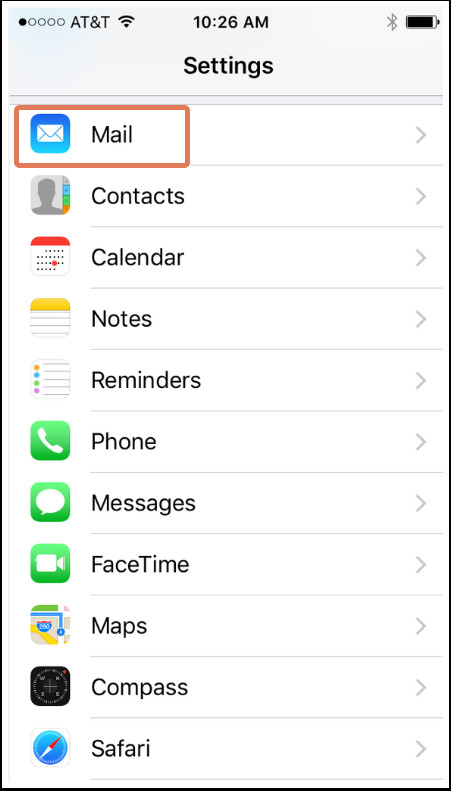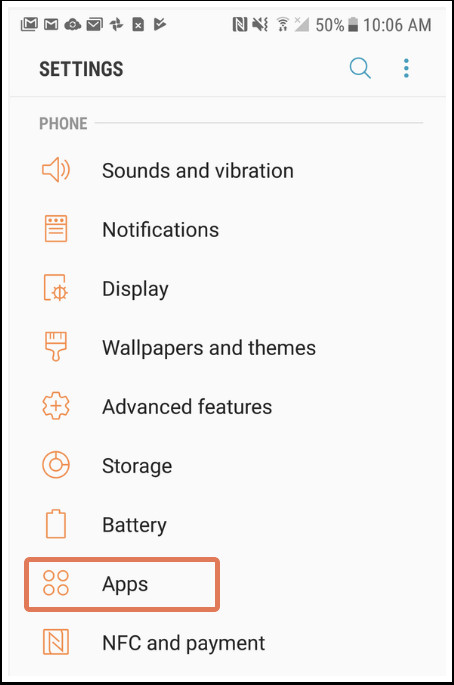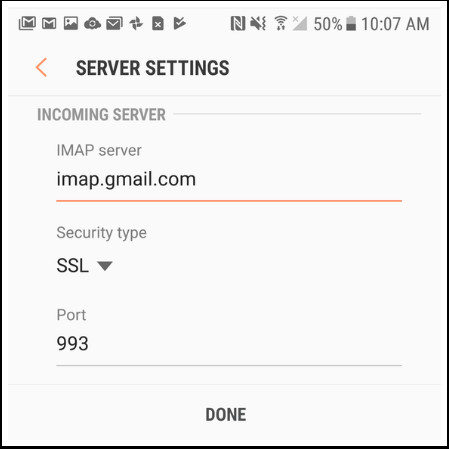Finding your incoming and outgoing mail server settings is essential for connecting your email to various applications and services, empowering seamless communication and potential partnership opportunities. At income-partners.net, we understand the importance of these technical details in facilitating effective business collaborations and revenue growth. Knowing these settings allows you to integrate your email with platforms like CRM systems, marketing automation tools, and collaboration software, ultimately enhancing your ability to connect with potential partners and streamline your business operations.
1. What Are Incoming and Outgoing Mail Servers and Why Are They Important?
Incoming and outgoing mail servers are critical components of email communication, facilitating the sending and receiving of messages. Understanding their roles is fundamental for effective email management and business operations.
Incoming Mail Server (IMAP/POP3): This server handles incoming emails, allowing you to access your messages from various devices. IMAP (Internet Message Access Protocol) lets you view emails directly on the server, keeping them synchronized across devices. POP3 (Post Office Protocol version 3) downloads emails to your device, which might then delete them from the server.
Outgoing Mail Server (SMTP): This server is responsible for sending emails from your email client to the recipient’s mail server. It ensures your messages are properly routed and delivered.
These servers are important because:
- Essential for Email Functionality: Without the correct server settings, you cannot send or receive emails.
- Integration with Business Tools: Accurate settings are crucial for connecting your email to CRM systems, marketing platforms, and other business tools.
- Security: Correctly configured servers ensure secure email transmission.
2. How Do I Find My Incoming and Outgoing Mail Server Settings on Apple Mail (Mac Desktop)?
Apple Mail on your Mac desktop provides a straightforward way to access your incoming and outgoing mail server settings, ensuring you can properly configure your email for various applications and services. Here’s how to find them:
Steps:
-
Open Preferences:
- Click Mail in your Mac’s toolbar.
- Select Preferences from the dropdown menu.
-
Select Account:
- In the left sidebar, choose the account you want to connect to HubSpot or any other service.
-
Access Account Information:
- Select Account Information.
-
Find Incoming Mail Server:
- Locate the field labeled Incoming Mail Server.
- The value displayed is your IMAP server name (e.g., imap.example.com).
-
Find Outgoing Mail Server:
- Find the field for Outgoing Mail Server.
- You may need to use the dropdown menu to select Edit SMTP server list to view the SMTP server name.
- The SMTP server name will be displayed (e.g., smtp.example.com). You can also find your SMTP port here.
By following these steps, you can easily find your incoming and outgoing mail server settings in Apple Mail, enabling you to integrate your email with various business tools and services.
3. Where Can I Find Incoming and Outgoing Mail Server Settings on Outlook for Mac?
Finding your incoming and outgoing mail server settings in Outlook for Mac is a simple process, ensuring you can properly configure your email for various applications and services, facilitating seamless business operations.
Steps:
-
Open Preferences:
- Click Outlook in your Mac’s toolbar.
- Select Preferences, then click Accounts.
-
Select Account:
- In the left sidebar, click on the account you want to connect to HubSpot or any other service.
-
Locate Server Settings:
- Find the fields for Incoming server and Outgoing server.
- The longer text box contains the server name (e.g., imap.example.com or smtp.example.com).
- The text box towards the right displays the port number.
By following these steps, you can easily find your incoming and outgoing mail server settings in Outlook for Mac. These settings are essential for connecting your email to CRM systems, marketing platforms, and other business tools, enhancing your ability to connect with potential partners and streamline your business operations. According to research from the University of Texas at Austin’s McCombs School of Business, integrating email with CRM can increase sales productivity by up to 15%.
4. How Do I Access Incoming and Outgoing Mail Server Settings on Outlook for PC?
Accessing your incoming and outgoing mail server settings on Outlook for PC is a straightforward process. This information is vital for configuring your email with various applications and services, streamlining your business operations.
Steps:
-
Open Account Settings:
- In Outlook, click File.
- Navigate to Account Settings > Account Settings.
-
Select Email Account:
- On the Email tab, double-click on the account you want to connect to HubSpot or any other service.
-
Find Server Information:
- Below Server Information, you can find your incoming mail server (IMAP) and outgoing mail server (SMTP) names (e.g., imap.example.com and smtp.example.com).
-
Access Advanced Settings for Ports:
- To find the ports for each server, click More settings… > Advanced.
By following these steps, you can easily find your incoming and outgoing mail server settings in Outlook for PC. Knowing these settings is essential for integrating your email with CRM systems, marketing platforms, and other business tools.
5. Where Can I Find Incoming and Outgoing Mail Server Settings on iPhone (Apple Mail)?
Locating your incoming and outgoing mail server settings on your iPhone is a simple process, enabling you to configure your email for various applications and services, thereby enhancing your business communications.
Steps:
-
Open Settings:
- Navigate to your iPhone’s Settings.
 iPhone Settings Icon
iPhone Settings Icon -
Access Mail Settings:
- On the next screen, click Mail, then select Accounts.
 iPhone Mail Settings
iPhone Mail Settings -
Select Email Account:
- Select the email account you want to connect to HubSpot or any other service.
-
Find Account Details:
- Under IMAP, select Account.
-
View Server Information:
- This will display your incoming (IMAP) and outgoing (SMTP) mail server information to use in HubSpot or any other application.
By following these steps, you can easily find your incoming and outgoing mail server settings on your iPhone. These settings are crucial for integrating your email with CRM systems, marketing platforms, and other business tools, streamlining your business operations and enhancing your ability to connect with potential partners.
6. How Do I Locate Incoming and Outgoing Mail Server Settings on Android (Native Android Email Client)?
Finding your incoming and outgoing mail server settings on your Android device is a straightforward process, allowing you to configure your email for various applications and services, thereby streamlining your business operations.
Steps:
-
Open Settings:
- Navigate to your Android’s Settings, and then click Apps.
 Android Settings Apps
Android Settings Apps -
Access Email Settings:
- On the next screen, click Email.
 Android Settings Apps Email
Android Settings Apps Email -
Select Account and Server Settings:
- Select your email address, and under Advanced Settings, click Server Settings.
-
View Server Information:
- You’ll then be brought to your Android’s Server Settings screen, where you can access your server information.
 Android Email Server Settings
Android Email Server Settings
By following these steps, you can easily find your incoming and outgoing mail server settings on your Android device. Accurate server settings are vital for integrating your email with CRM systems, marketing platforms, and other business tools, enhancing your ability to connect with potential partners and streamline your business operations.
7. Why Can’t I Find My Mail Server Settings Automatically?
Sometimes, your email client or application may not automatically detect your mail server settings. There are several reasons why this might occur, and understanding these can help you troubleshoot the issue effectively.
Common Reasons:
- Incorrect Email Provider: You might have selected the wrong email provider during setup. Ensure you choose the correct provider (e.g., Gmail, Outlook, Yahoo) or select the “Manual Setup” option.
- Network Issues: A poor or unstable internet connection can prevent your device from retrieving server settings.
- Firewall or Security Software: Your firewall or security software might be blocking the connection to the mail server. Check your firewall settings to ensure that your email client is allowed to communicate with the internet.
- Custom Domain: If you are using a custom domain for your email (e.g., @yourbusiness.com), the settings may not be automatically detected. You will need to manually enter the correct IMAP/SMTP settings provided by your email hosting service.
- Outdated Software: An outdated email client or operating system might not support automatic configuration for certain email providers.
Troubleshooting Steps:
- Check Internet Connection: Ensure you have a stable internet connection.
- Verify Email Provider: Double-check that you have selected the correct email provider or chosen the manual setup option.
- Disable Firewall Temporarily: Temporarily disable your firewall or security software to see if it’s blocking the connection. If it is, adjust your firewall settings to allow your email client to communicate with the mail server.
- Update Software: Update your email client and operating system to the latest versions.
- Contact Email Provider: If you’re still unable to find your settings, contact your email provider’s support team for assistance.
By understanding these potential issues and troubleshooting steps, you can effectively resolve problems with automatically detecting your mail server settings. Accurate settings are vital for seamless email integration with various applications and services, enhancing your business operations and potential partnership opportunities.
8. What If My IT Team Can’t Provide My Mail Server Information?
In some cases, your IT team may not be able to readily provide your mail server information. This can be due to various reasons, such as staff turnover, incomplete documentation, or complex network configurations. However, there are alternative ways to find this information.
Alternative Solutions:
- Check Email Provider’s Website: Most email providers have support pages that list the necessary IMAP, POP3, and SMTP settings. Look for terms like “email server settings,” “IMAP settings,” or “SMTP settings” on their help or support pages.
- Use Online Tools: Several websites offer tools that attempt to automatically detect your mail server settings based on your email address. While these tools are not always accurate, they can provide a starting point.
- Review Email Client Configuration: If you have previously configured your email on another device or email client, review those settings to find the server information.
- Contact Email Hosting Provider: If you are using a custom domain, contact your email hosting provider directly. They should be able to provide you with the correct server settings.
- Consult Online Forums and Communities: Online forums and communities dedicated to IT and email troubleshooting can be valuable resources. Other users may have encountered similar issues and can offer guidance.
Example Resources:
- Gmail: Google Workspace Admin Help provides detailed information on Gmail’s server settings.
- Outlook: Microsoft Support offers comprehensive guides on configuring Outlook with various email providers.
- Yahoo Mail: Yahoo Help provides instructions on finding Yahoo Mail’s server settings.
By exploring these alternative solutions, you can often find the necessary mail server information even if your IT team is unable to provide it immediately. Accurate settings are vital for seamless email integration with various applications and services, enhancing your business operations and potential partnership opportunities.
9. How Do I Secure My Email Communication Using the Right Server Settings?
Securing your email communication is essential for protecting sensitive business information and maintaining the trust of your partners and clients. Using the right server settings can significantly enhance your email security.
Key Security Measures:
- Use SSL/TLS Encryption: Ensure that your incoming and outgoing mail servers are configured to use SSL (Secure Sockets Layer) or TLS (Transport Layer Security) encryption. These protocols encrypt your email traffic, preventing eavesdropping and unauthorized access.
- Enable STARTTLS: STARTTLS is a protocol command that tells the email server to upgrade an existing insecure connection to a secure (encrypted) connection using SSL/TLS. Ensure that your email client and server support and enable STARTTLS.
- Use Strong Passwords: Use strong, unique passwords for your email accounts. Avoid using easily guessable words, personal information, or common patterns.
- Enable Two-Factor Authentication (2FA): Two-factor authentication adds an extra layer of security to your email accounts by requiring a second verification method, such as a code sent to your phone, in addition to your password.
- Keep Software Updated: Regularly update your email client, operating system, and security software to patch any vulnerabilities and protect against malware and other threats.
- Be Wary of Phishing: Be cautious of suspicious emails that ask for personal information or direct you to unfamiliar websites. Phishing attacks can compromise your email accounts and lead to data breaches.
Example Settings:
| Setting | Recommendation |
|---|---|
| Encryption Type | SSL/TLS |
| Incoming Port | 993 (IMAP with SSL), 995 (POP3 with SSL) |
| Outgoing Port | 465 (SMTP with SSL), 587 (SMTP with STARTTLS) |
| Authentication | Requires authentication |
| Server Addresses | Provided by your email provider (e.g., imap.gmail.com) |
By implementing these security measures and using the right server settings, you can significantly enhance the security of your email communication. This is crucial for protecting sensitive business information, maintaining the trust of your partners and clients, and ensuring the integrity of your business operations.
10. How Do Email Server Settings Affect My Ability to Partner with Other Businesses?
Email server settings might seem like a purely technical issue, but they can significantly impact your ability to partner with other businesses. Here’s how:
Impact on Business Partnerships:
- Reliable Communication: Correct email server settings ensure that your emails are reliably sent and received. This is crucial for maintaining consistent communication with potential partners, exchanging important documents, and coordinating collaborative projects.
- Professional Image: Using a properly configured email system with a custom domain (e.g., @yourbusiness.com) projects a professional image. This can enhance your credibility and make a positive impression on potential partners.
- Data Security: Secure email communication is essential for protecting sensitive business information shared with partners. Using the right encryption settings (SSL/TLS) ensures that your data is protected from unauthorized access.
- Integration with Collaboration Tools: Accurate email server settings are necessary for integrating your email with collaboration tools like CRM systems, project management software, and shared document platforms. This enables seamless collaboration and enhances productivity.
- Compliance with Regulations: In some industries, compliance with data protection regulations like GDPR or HIPAA requires secure email communication. Using the right server settings helps ensure that you meet these compliance requirements.
Practical Examples:
- Secure Document Exchange: When exchanging contracts or financial documents with partners, using encrypted email ensures that sensitive information is protected.
- Consistent Communication: Reliable email delivery ensures that you don’t miss important communications from partners, such as project updates, meeting invitations, or contract revisions.
- Professional Branding: Using a custom domain email address reinforces your brand identity and makes your communication more professional.
By understanding the impact of email server settings on your ability to partner with other businesses, you can take steps to ensure that your email system is properly configured and optimized for effective communication and collaboration. This can enhance your credibility, protect your data, and facilitate successful partnerships.
Income-partners.net understands the importance of these technical details in facilitating effective business collaborations and revenue growth. We can help you connect with potential partners and streamline your business operations. According to a study by Harvard Business Review, companies with strong partner ecosystems are more likely to outperform their competitors.
FAQ: Incoming and Outgoing Mail Server Settings
1. What is the difference between IMAP and POP3 for incoming mail servers?
IMAP (Internet Message Access Protocol) allows you to access your emails directly on the server, keeping them synchronized across multiple devices. POP3 (Post Office Protocol version 3) downloads emails to a single device and may delete them from the server.
2. Why is SMTP used for the outgoing mail server?
SMTP (Simple Mail Transfer Protocol) is the standard protocol for sending emails across the internet. It ensures that your messages are properly routed from your email client to the recipient’s mail server.
3. How do I find my email provider’s recommended server settings?
Visit your email provider’s support website and search for “email server settings,” “IMAP settings,” or “SMTP settings.” These pages usually provide the necessary server addresses and port numbers.
4. What does SSL/TLS encryption do for my email security?
SSL (Secure Sockets Layer) and TLS (Transport Layer Security) encrypt your email traffic, preventing eavesdropping and unauthorized access. They ensure that your emails are securely transmitted between your device and the mail server.
5. What is STARTTLS, and why should I enable it?
STARTTLS is a protocol command that upgrades an insecure connection to a secure (encrypted) connection using SSL/TLS. Enabling STARTTLS ensures that your email communication is protected from interception.
6. How do I know if my email server is using SSL/TLS encryption?
Check your email client’s settings for the incoming and outgoing mail servers. Look for options like “SSL,” “TLS,” or “STARTTLS” and ensure they are enabled. The port numbers should also correspond to the secure ports (e.g., 993 for IMAP with SSL, 465 or 587 for SMTP with SSL/TLS).
7. What are common port numbers for incoming and outgoing mail servers?
Common port numbers include:
- Incoming (IMAP with SSL): 993
- Incoming (POP3 with SSL): 995
- Outgoing (SMTP with SSL): 465
- Outgoing (SMTP with STARTTLS): 587
8. Why can’t I send emails even with the correct server settings?
Possible reasons include:
- Incorrect password
- Firewall blocking the connection
- Email provider blocking your account due to suspicious activity
- Outdated email client
9. How does two-factor authentication enhance my email security?
Two-factor authentication (2FA) adds an extra layer of security by requiring a second verification method, such as a code sent to your phone, in addition to your password. This makes it more difficult for unauthorized users to access your account.
10. What should I do if I suspect my email account has been compromised?
Change your password immediately, enable two-factor authentication, and review your account activity for any suspicious behavior. Contact your email provider’s support team for assistance.
By understanding these FAQs, you can better manage your email server settings and ensure secure and reliable communication. Income-partners.net is here to help you navigate these technical aspects and focus on building successful business partnerships. According to research from Entrepreneur.com, businesses that prioritize secure communication are more likely to build strong and lasting partnerships.
At income-partners.net, we’re dedicated to helping you navigate the complexities of business partnerships and revenue growth. Discover a wealth of information on various partnership types, effective relationship-building strategies, and promising collaboration opportunities.